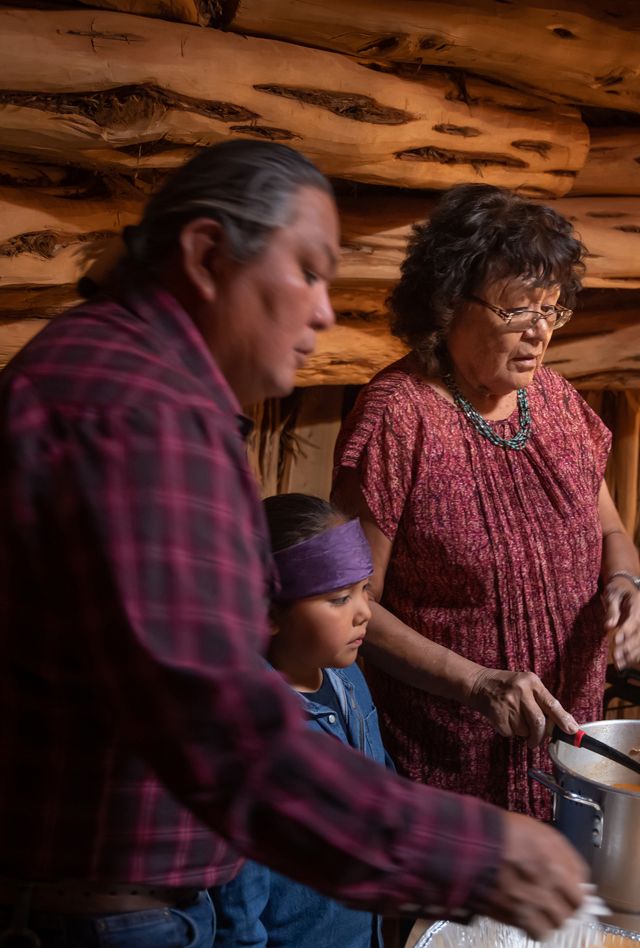Study of Food Distribution Program on Indian Reservations

Challenge
The last nationally representative study for the Food Distribution Program on Indian Reservations was completed in 1990.
The U.S. Department of Agriculture provides nutrition assistance to Tribal communities through the Food Distribution Program on Indian Reservations (FDPIR). Since the last nationally representative study in 1990, there have been many changes in FDPIR affecting eligibility, warehouse operations and distribution, customer service, and improvements in the types and variety of products offered in the food package.
Completed in 2016, this study provided an update of FDPIR participant characteristics and program operations based on a nationally representative sample of 23 FDPIR programs, including both large and small Tribes. NORC conducted extensive outreach with the selected Tribes to obtain approval to conduct case record reviews and a household survey.
Solution
We conducted an updated national study of the FDPIR programs and participants.
In 2011, the U.S. Department of Agriculture's Food and Nutrition Service (USDA FNS) contracted with the Urban Institute and its partners—NORC at the University of Chicago and Support Services International—to conduct a national study of FDPIR and its participants.
NORC collected administrative data from households’ FDPIR applications or most recent recertification paperwork to obtain data on households’ demographic characteristics, size, income, and other variables that form the basis of the national profile. NORC conducted the case record review between December 2013 and December 2014. We reviewed case files for 1,053 households among the 23 Tribes and Indian Tribal Organizations (ITOs) in the study sample, collecting data on participants' household composition, earned and unearned income sources, self-employment, student status, and resources.
Eligible households were then invited to take part in the household survey. NORC fielded a 30-minute survey administered either in person or by telephone with FDPIR participants. Twenty-eight Tribal community members were hired to serve as field interviewers for the in-person data collection effort with the NORC team achieving an 83 percent response rate. The survey addressed food storage and preparation, FDPIR contribution to the household's food supply, food security, access to the FDPIR program and barriers to access, food costs, participation in FDPIR and other food assistance programs, nutrition education and other health-related services, and program satisfaction. Additional components of the study conducted by the study partners included site visits to selected Tribes and Indian Tribal Organizations and modeled how changes in FDPIR policy, household composition, and characteristics, and economic factors affected eligibility.
Result
FDPIR is the sole or primary source of food for 38 percent of households surveyed.
Key findings from the study:
- FDPIR serves people of all ages, including very young children, school-age children, young and older adults, and elders from age 60 to beyond 75.
- Adult participation has remained constant over time, but participation by children and elders has changed. The participation of children in FDPIR has declined, while the participation of elders has increased.
- The monthly income of FDPIR households is very low. The average monthly income for those households that reported earned or unearned income was $1,144. Twelve percent of all FDPIR households reported zero income.
- Although FDPIR is intended to be a supplemental food package program, survey responses indicate that it was the sole or primary source of food for 38 percent of households.
- An estimated 34 percent of households experienced low food security; 22 percent of FDPIR households reported disrupted eating patterns and reduced food intake and are considered to have very low food security.
- Nutrition education is helping to change the way program participants cook and eat. According to the household survey, of the respondents who had picked up educational materials or taken part in nutrition education activities, an estimated 52 percent made changes to their cooking practices or eating habits.
A key contribution to the successful implementation of this study was our commitment to observe Tribal research protocols and engage with Tribal leaders and FDPIR program directors on all aspects of the study, including study design, Tribal hiring practices, consent processes, and data ownership.
Project Lead
Related Tags
Project Leads
-
Carol Hafford
Senior FellowProject Director -
Steven Pedlow
Principal StatisticianSenior Staff -
Jodie Smylie
Senior Research DirectorSenior Staff











